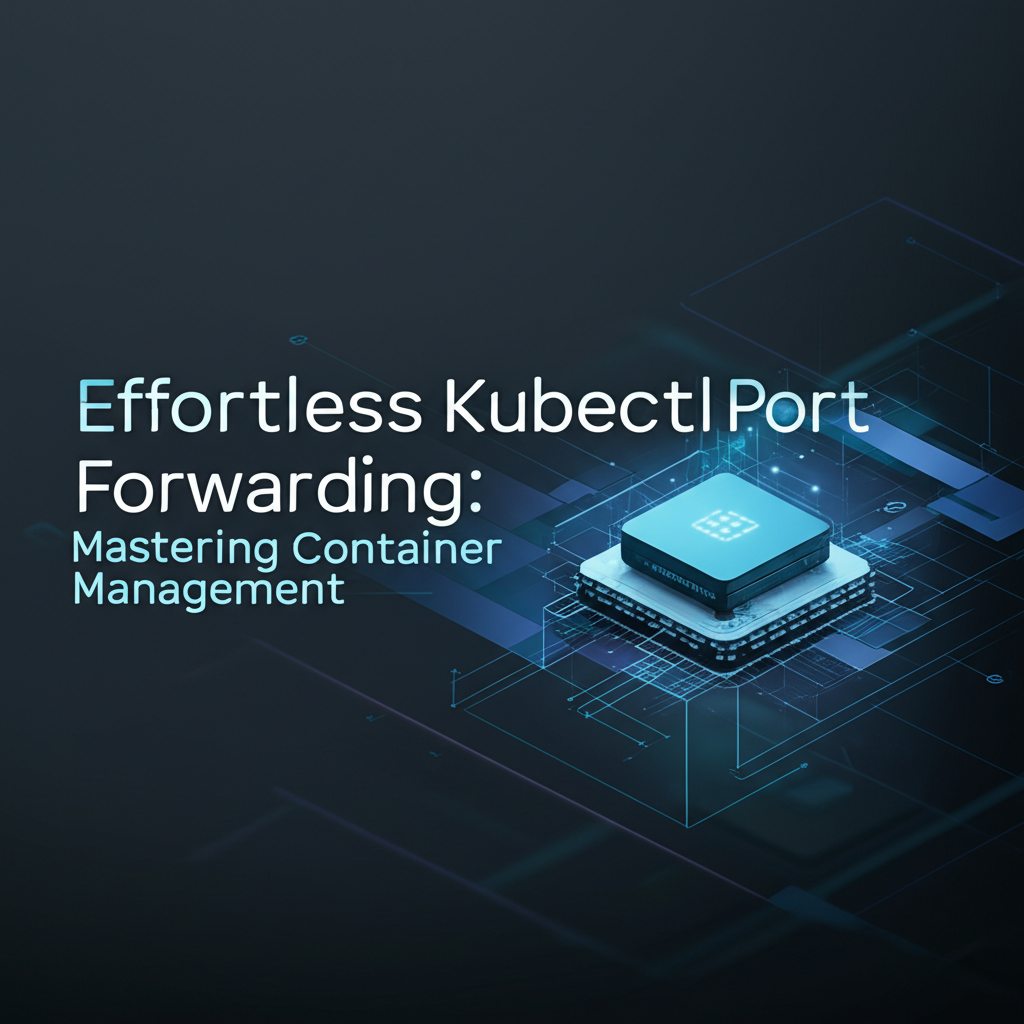Effortless Kubectl Port Forwarding: Mastering Container Management

Container management has become a crucial aspect of modern software development, with Kubernetes (k8s) being one of the most popular orchestration tools. Among the numerous commands and utilities available for Kubernetes, kubectl port-forward is a powerful feature that simplifies the process of forwarding ports from a local machine to a container running in a Kubernetes cluster. This article delves into the nuances of using kubectl port-forward, its applications in container management, and how it can be further enhanced with tools like APIPark.
Understanding Kubectl Port Forwarding
What is Port Forwarding?
Port forwarding, also known as port mapping, is a technique that redirects a communication request from one port number to another. In the context of Kubernetes, port forwarding allows you to access services running inside a pod from your local machine. This is particularly useful for debugging, testing, or simply interacting with a service without needing to navigate the cluster's networking.
The Kubectl Port-Forward Command
The kubectl port-forward command is used to forward one or more ports from a pod to a local port on the host machine. It's a simple way to access a service running inside a container without the need for complex networking configurations.
kubectl port-forward <pod-name> <local-port>:<container-port>
For example, to forward port 8080 from the container to your local machine's port 8080, you would use the following command:
kubectl port-forward pod/my-pod 8080:8080
This command would create a tunnel between your local machine and the pod, allowing you to access the service at http://localhost:8080.
Mastering Container Management with Kubectl Port Forwarding
Common Use Cases
- Debugging: Port forwarding is an essential tool for debugging applications running in Kubernetes pods. It allows developers to interact with the service's endpoints directly, enabling them to set breakpoints, inspect logs, and analyze network traffic.
- Testing: Developers can use port forwarding to test their applications in a production-like environment without deploying a new cluster. This is particularly useful when testing new features or updates.
- Interacting with Services: Port forwarding can be used to access a service's API from a local machine, which is useful for testing or developing new tools that interact with the service.
Best Practices
- Security: When using port forwarding, be cautious about which ports you expose and to whom. Only forward ports that are necessary and ensure that you're not exposing sensitive information.
- Performance: Port forwarding can introduce latency and is not suitable for high-load scenarios. It should be used for debugging and testing purposes only.
- Resource Utilization: Port forwarding uses your local machine's resources, so be mindful of the impact on your system's performance.
APIPark is a high-performance AI gateway that allows you to securely access the most comprehensive LLM APIs globally on the APIPark platform, including OpenAI, Anthropic, Mistral, Llama2, Google Gemini, and more.Try APIPark now! 👇👇👇
Enhancing Kubectl Port Forwarding with APIPark
While kubectl port-forward is a valuable tool, it can be enhanced with additional functionalities to improve the container management experience. APIPark, an open-source AI gateway and API management platform, offers several features that can complement the use of kubectl port-forward.
APIPark Integration
APIPark can be integrated with Kubernetes to provide a more robust container management solution. By using APIPark, you can:
- Centralize API Management: APIPark allows you to manage APIs across your Kubernetes cluster, including those accessed via port forwarding.
- Enhance Security: APIPark can enforce access control policies, ensuring that only authorized users can access services running inside containers.
- Improve Performance: APIPark can offload some of the workload from your local machine, reducing the load on your system when using port forwarding.
Key Features of APIPark
| Feature | Description |
|---|---|
| Quick Integration of 100+ AI Models | APIPark provides the capability to integrate a variety of AI models with a unified management system for authentication and cost tracking. |
| Unified API Format for AI Invocation | It standardizes the request data format across all AI models, ensuring that changes in AI models or prompts do not affect the application or microservices. |
| Prompt Encapsulation into REST API | Users can quickly combine AI models with custom prompts to create new APIs, such as sentiment analysis, translation, or data analysis APIs. |
| End-to-End API Lifecycle Management | APIPark assists with managing the entire lifecycle of APIs, including design, publication, invocation, and decommission. |
| API Service Sharing within Teams | The platform allows for the centralized display of all API services, making it easy for different departments and teams to find and use the required API services. |
Conclusion
Kubectl port forwarding is a valuable tool for container management, allowing developers and operations teams to easily access and interact with services running in Kubernetes pods. By combining kubectl port-forward with tools like APIPark, you can enhance your container management experience, improving security, performance, and overall efficiency. Whether you're debugging, testing, or simply interacting with your services, the right tools can make all the difference.
FAQs
1. What is the difference between kubectl port-forward and kubectl expose?
kubectl port-forward allows you to access a pod's ports from your local machine, while kubectl expose creates a service that exposes a pod or set of pods to the outside world. The service can be of different types, such as NodePort, LoadBalancer, or ClusterIP.
2. Can kubectl port-forward be used to expose a service to the internet?
Yes, you can use kubectl port-forward to expose a service to the internet by forwarding the local port to a public IP address. However, this is not recommended for production environments due to security and scalability concerns.
3. How do I know which container port to forward?
You can find the container port by looking at the pod's specification. The ports field in the pod's configuration file defines the ports exposed by the container.
4. Can I forward multiple ports with kubectl port-forward?
Yes, you can forward multiple ports by specifying them in a comma-separated list. For example:
kubectl port-forward pod/my-pod 8080:8080,8081:8081
5. How do I stop a kubectl port-forward session?
You can stop a kubectl port-forward session by pressing Ctrl + C in the terminal where the command is running. Alternatively, you can use the kill command to terminate the process.
🚀You can securely and efficiently call the OpenAI API on APIPark in just two steps:
Step 1: Deploy the APIPark AI gateway in 5 minutes.
APIPark is developed based on Golang, offering strong product performance and low development and maintenance costs. You can deploy APIPark with a single command line.
curl -sSO https://download.apipark.com/install/quick-start.sh; bash quick-start.sh

In my experience, you can see the successful deployment interface within 5 to 10 minutes. Then, you can log in to APIPark using your account.

Step 2: Call the OpenAI API.



